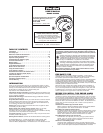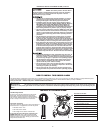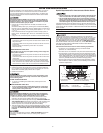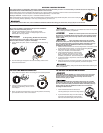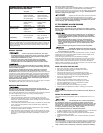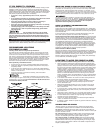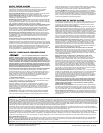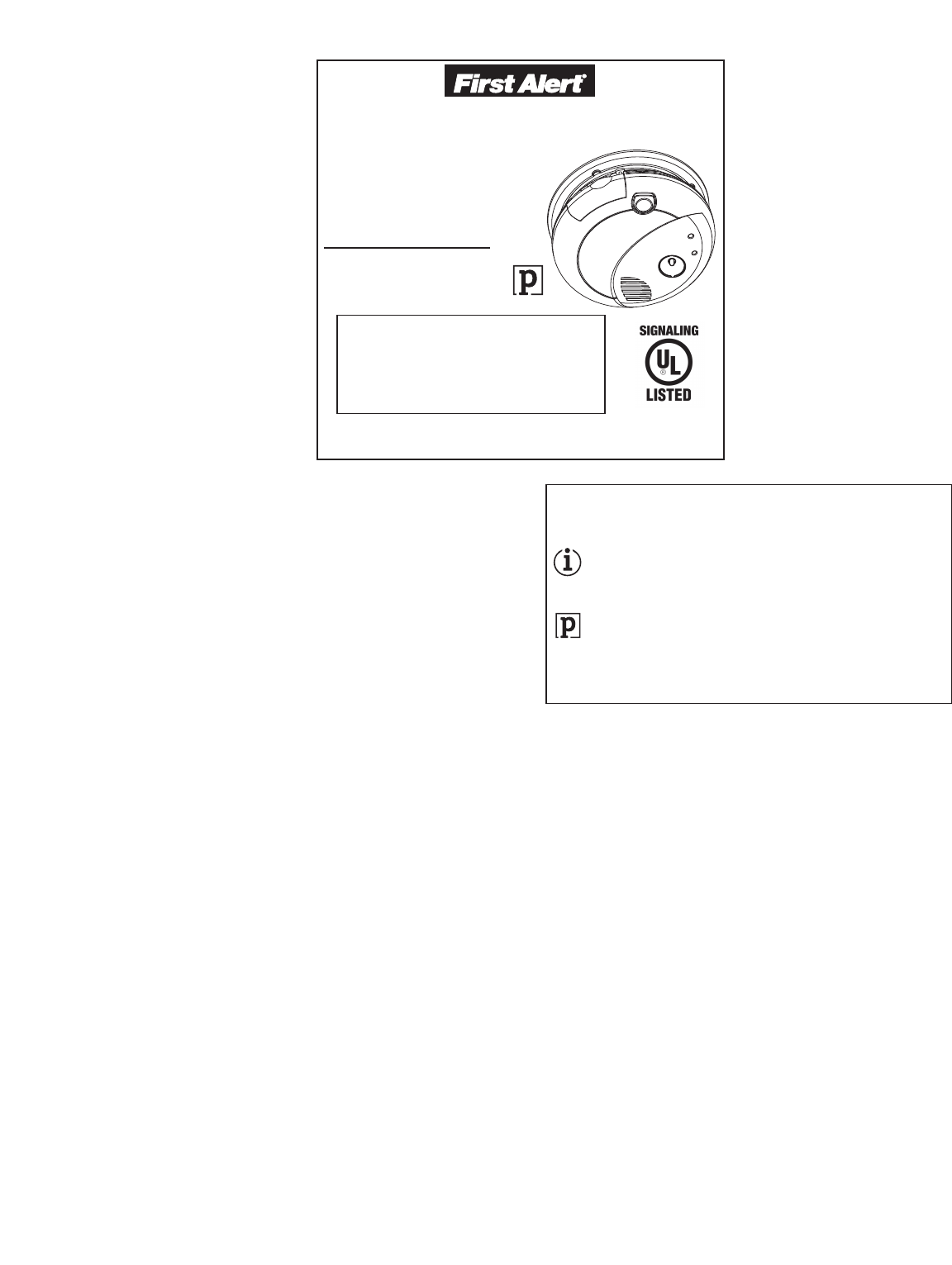
Model 7020B
US Patent 6,377,182
M08-0178-001
Q 06/07 Printed in Mexico
IMPOR
TANT!
PLEASE READ CAREFULL
Y AND SAVE.
This user’
s manual contains important
information about your Smoke Alarm’s operation.
If you are installing this Smoke Alarm for use by
others, you must leave this manual—
or a copy of it—with the end user.
INTRODUCTION
Thank you for choosing First Alert
®
for your Smoke Alarm needs. You have
purchased a state of the art Smoke Alarm designed to provide you with early
war
ning of a fir
e. Please take the time to r
ead this manual and make the
Smoke Alarm an integral part of your family’s safety plan.
Key Featur
es of the 7020B Smoke Alarm:
Photoelectric Sensing Technology: Photoelectric Sensors are generally more
sensitive than ionization sensors in detecting smoldering fires which commonly
occur in couches or bedding.
OptiPath 360 T
echnology™:
Patented technology pr
ovides 360° of direct
access to the smoke sensor.
Single Test/Silence Button: Allows you to test the alarm or silence nuisance
alarms. Testing the Alarm assures you that the unit is functioning correctly
and r
eady to pr
otect you and your family
. The Alarm can be silenced for up
to 15 minutes in the event of a nuisance alarm.
Escape Light
®
: Bright escape light activates when this unit goes into alarm
to illuminate your path to safety.
Battery Drawer with “battery missing” lockout: Allows you to easily
replace the battery with out removing the alarm from the ceiling.
The battery door will not close if a battery has not been inserted thus alerting
you that the unit is not power
ed and not operating.
Low batter
y warning:
The Alarm will sound a “chirp” once per minute when
the battery needs to be replaced.
Blinking Power Indicator: Confirms that the Smoke Alarm is r
eceiving power
.
© 2007 BRK Brands, Inc.,
a Jar
den Corporation company (NYSE: JAH)
3901 Liberty Street Road, Aurora, IL 60504-8122 All rights reserved.
Consumer Af
fairs: (800)323-9005 • www.firstalert.com
• www
.brkelectronics.com
FIRE SAFETY TIPS
Follow safety rules and prevent hazardous situations: 1) Use smoking
materials properly. Never smoke in bed. 2) Keep matches or lighters away
from children; 3) Store flammable materials in proper containers;
4) Keep electrical appliances in good condition and don’t overload electrical
circuits; 5) Keep stoves, barbecue grills, fireplaces and chimneys grease-
and debris-free; 6) Never leave anything cooking on the stove unattended;
7) Keep portable heaters and open flames, like candles, away from flammable
materials; 8) Don’t let rubbish accumulate.
Keep alarms clean, and test them weekly. Replace alarms immediately if
they are not working properly. Smoke Alarms that do not work cannot alert
you to a fire. Keep at least one working fire extinguisher on every floor, and
an additional one in the kitchen. Have fir
e escape ladders or other reliable
means of escape from an upper floor in case stairs are blocked.
BEFORE YOU INSTALL THIS SMOKE ALARM
IMPORTANT! Read “Recommended Locations for Smoke Alarms” and
“Locations to Avoid for Smoke Alarms” before beginning. This unit monitors
the air, and when smoke reaches its sensing chamber, it alarms. It can give
you mor
e time to escape befor
e fir
e spreads. This unit can ONLY give an early
warning of developing fires if it is installed, maintained and located where
smoke can r
each it, and wher
e all residents can hear it, as described in this
manual. This unit will not sense gas, heat, or flame. It cannot prevent or
extinguish fires.
Understand The Different Type of Smoke Alarms
Battery power
ed or electrical? Dif
fer
ent Smoke Alarms pr
ovide dif
fer
ent
types of pr
otection. See “About Smoke Alarms” for details.
Know Where To Install Your Smoke Alarms
Fire Safety Professionals recommend at least one Smoke Alarm on every
level of your home, in every bedr
oom, and in every bedr
oom hallway or
separate sleeping area. See “Recommended Locations For Smoke
Alarms” and “Locations To Avoid For Smoke Alarms” for details.
Know What Smoke Alar
ms Can and Can’
t Do
A Smoke Alarm can help alert you to fire, giving you precious time to
escape. It can only sound an alarm once smoke reaches the sensor.
See “Limitations of Smoke Alarms” for details.
Check Y
our Local Building Codes
This Smoke Alarm is designed to be used in a typical single-family home.
It alone will not meet requirements for boarding houses, apartment buildings,
hotels or motels. See “Special Compliance Considerations”
for details.
1
All First Alert
®
and BRK
®
Smoke Alarms conform to regulatory
requirements, including UL217 and are designed to detect particles of
combustion. Smoke particles of varying number and size are produced
in all fir
es.
Ionization technology is generally more sensitive than photoelectric
technology at detecting small particles, which tend to be produced
in greater amounts by flaming fires, which consume combustible
materials rapidly and spread quickly. Sources of these fires may include
paper burning in a wastebasket, or a grease fire in the kitchen.
Photoelectric technology is generally more sensitive than ionization
technology at detecting large particles, which tend to be produced in
greater amounts by smoldering fires, which may smolder for hours
before bursting into flame. Sources of these fires may include cigarettes
burning in couches or bedding.
For maximum protection, use both types of Smoke Alarms on each
level and in every bedroom of your home.
USER’S MANUAL
SMOKE ALARMS
AC Powered Photoelectric Smoke Alarm
with Batter
y Back-Up, Silence and
Escape Light
®
Featur
e
Model 7020B
Input: 120V AC ~, 60Hz, 0.05A
TABLE OF CONTENTS
Introduction . . . . . . . . . . . . . . . . . . . . . . . . . . . . . . . . . . . . . . . . . . . . . . . . . .1
Fire Safety Tips . . . . . . . . . . . . . . . . . . . . . . . . . . . . . . . . . . . . . . . . . . . . . . . .1
Before Y
ou Install This Smoke Alarm . . . . . . . . . . . . . . . . . . . . . . . . . . . .1-2
How To Install This Smoke Alarm . . . . . . . . . . . . . . . . . . . . . . . . . . . . . . .2-3
Optional Locking Features . . . . . . . . . . . . . . . . . . . . . . . . . . . . . . . . . . . . . .4
Understanding the Indicator Lights
and Alarm Horn Patterns . . . . . . . . . . . . . . . . . . . . . . . . . . . . . . . . . . . . . . .5
Weekly Testing . . . . . . . . . . . . . . . . . . . . . . . . . . . . . . . . . . . . . . . . . . . . . . . .5
Regular Maintenance . . . . . . . . . . . . . . . . . . . . . . . . . . . . . . . . . . . . . . . . . . .5
If This Smoke Alarm Sounds . . . . . . . . . . . . . . . . . . . . . . . . . . . . . . . . . . . .5
What To Do In Case Of Fire . . . . . . . . . . . . . . . . . . . . . . . . . . . . . . . . . . . . . .5
Using the Silence Feature . . . . . . . . . . . . . . . . . . . . . . . . . . . . . . . . . . . . . . .5
If You Suspect a Problem . . . . . . . . . . . . . . . . . . . . . . . . . . . . . . . . . . . . . . .6
Recommended Locations For Smoke Alarms . . . . . . . . . . . . . . . . . . . . . .6
Locations To Avoid For Smoke Alarms . . . . . . . . . . . . . . . . . . . . . . . . . . . .6
About Smoke Alarms . . . . . . . . . . . . . . . . . . . . . . . . . . . . . . . . . . . . . . . . . . .7
Special Compliance Considerations . . . . . . . . . . . . . . . . . . . . . . . . . . . . . .7
Limitations of Smoke Alarms . . . . . . . . . . . . . . . . . . . . . . . . . . . . . . . . . . . .7
Limited Warranty . . . . . . . . . . . . . . . . . . . . . . . . . . . . . . . . . . . . . . . . . . . . . .7



